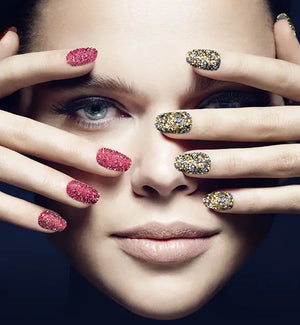
How to Tell If Your Swarovski Crystal is Real
Swarovski is known for producing high-quality, stunning crystals that are widely sought after by both jewellery lovers and collectors alike. However, with such popularity comes the risk of counterfeits flooding the market - so here are some useful ways to help you identify if your Swarovski crystal is genuine or not. Let’s take a look!
Real Swarovski crystals vs fake: how to tell the difference
Logos and hallmarks
One of the simplest ways to verify your Swarovski crystal's authenticity is by looking for the company's logo. Initially, the brand used the edelweiss flower, but it was replaced by the Swan logo in 1989, and later by the Swan logo combined with the letters 'SCS' in 2021. If you don't find these on your crystal, it might be a fake.
Precision cutting
Swarovski crystals are renowned for their meticulous cutting and faceting, resulting in superior brilliance and sparkle; this means that the crystals are uniformly cut with no bubbles, scratches or imperfections visible to the naked eye. If you notice any inconsistencies, it's likely not a genuine Swarovski.
This really is one of the biggest tell-tale signs of a Swarovski counterfeit: Swarovski crystals are man-made, and they’re cut flawlessly using the finest crystals. This means, you shouldn’t be able to see any imperfections inside the crystals, and they sparkle way more than their imitations.
Clarity and colour
Another point to remember when it comes to a Swarovski original vs fake imitations is that the best selection Swarovski crystal beads have exceptional clarity and consistent colour throughout. Fakes often fail to replicate the vibrant, precise colours of genuine Swarovski crystals and may appear dull or have varying shades. An easy way to test this is to hold a Swarovski crystal next to any number of non-branded varieties. If they have the same type of sparkle, it’s highly likely they aren’t genuine.
Uniformity
The next important point to note is that each Swarovski crystal of the same type will have consistent size, shape, and colour. If you see variations between pieces of the same type, it's a strong sign of counterfeit products.
Pricing
Although Swarovski products are renowned for their affordable cost, if you come across any which are half of the price of standard cost of Swarovski pendants, you can guarantee they aren’t genuine. Genuine Swarovski sellers don’t have to lower their prices drastically as they know the products they are selling are worth the cost. However, sellers who are offering fake Swarovski pendants will typically sell them off at a much lower cost in order to attract buyers.
Packaging
Authentic Swarovski products come in a high-quality box or case featuring the Swarovski logo. Counterfeit products may come in subpar packaging or without any branding.
Other factors to consider
Swarovski creates their crystals with expert precision. It’s estimated they have around 32% lead oxide, compared to just 12% to 28% lead oxide in normal glass crystals. This essentially makes them heavier, and they reflect the light much more than standard crystals. So, if you’ve bought Swarovski crystal beads and they feel really light, it’s unlikely they’re genuine.
Finally, it’s highly unusual for individual Swarovski crystal beads to come already strung. They’re sold in loose packs, ready for you to string them yourself. So, if you come across a listing selling Swarovski crystal beads that are already strung, it’s a red flag to show they’re not authentic.
How to ensure you buy authentic Swarovski crystals
So, how can you ensure you’re buying authentic Swarovski crystals? Here’s what we recommend:
Choose an Swarovski approved supplier
Of course, the best way to guarantee that you’re getting authentic Swarovski beads and crystals is to buy them from a reliable and respected seller. At Bluestreak Crystals, we source our Swarovski crystals directly from the Swarovski factory in Austria. This means that we’re able to prove the authenticity of our crystals, enabling you to buy confidently, with total peace of mind.
Check the suppliers Swarovski Certificate
An authorised supplier should display their Swarovski Authorised Certificate on their website, for example Bluestreak Crystals Swarovski Certificate. The name of the company you are purchasing from should make the company name on the Certificate, plus the certificate must be signed and in-date.






